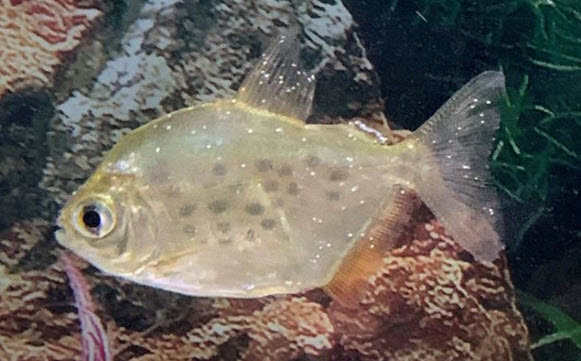
MYTHBUSTER: ALL the well-done scientific studies by researchers on heat and ich have found heat to be totally ineffective in treating ich!
Note there are two other diseases that look like ich (tetrahymena in livebearers and epistylis in other fish). So make sure you have ich.
Public Aquariums use formalin/malachite green (Ich-X, Rid-Ich Plus, Blue Planet White Spot Remedy, AquaCare Anti-Fungus & White Spot, and Mardel QuickCure) to treat ich in freshwater fish, as do University Research Centers, Cory of Aquarium Co-op, and Joey.
Note:
- NEVER turn off the filter, remove the filter, change the filter media or clean the filter media. If the carbon has been in the aquarium for more than two weeks do NOT remove it (contrary to some directions). This is VERY important.
- Do NOT move the fish to a quarantine tank (contrary to some directions).
- Formalin and malachite green are both toxic in large enough dosages so carefully follow the dosage directions on the medication bottle.
- If one raises the temperature with formalin/malachite green the medication can become somewhat toxic.
- Cory and others have treated thousands of “scaleless” fish with full strength formalin medication with absolutely no problem.
- Formalin/malachite green is not poisonous to snails or shrimp at the proper dosage.
- At 76 degrees formalin and malachite green need to be added every day to be effective.
- Follow the directions on the medication as to water changes.
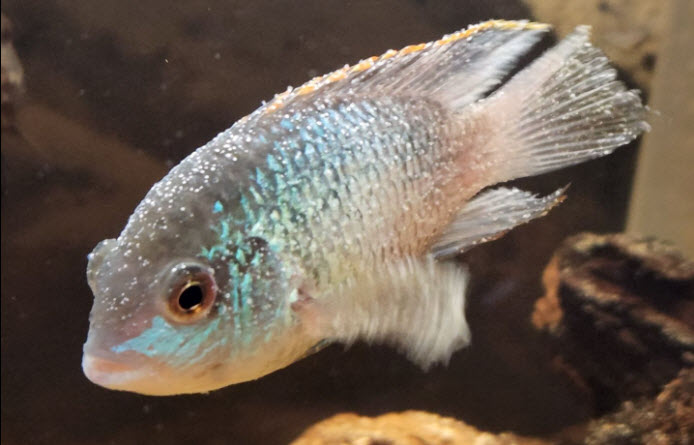
The seminal study on ich treatments (Tieman and Goodwin, 2001) found salt (0.25%) and heat to have no effect on ich. Other studies say 0.5% to 1% salt can reduce mortality from ich but is not as effective as medication. UV sterilizers, even at low wattages, can help immensely to eliminate ich from the aquarium.
Established filters have thousands of little carnivorous critters in them which eat the infectious ich stage (the “theront”), so the filter is very important. The net result of this filter “medication” is that if you have a long-established aquarium filter with plenty of brown “gunk” in it, it is perfectly OK to do absolutely nothing for the ich. It will simply go away on its own in a week or two.
Because ich will go away in an established aquarium, there are at least 55 “treatments” currently “absolutely guaranteed” to stop ich. There is an old saying in science: “correlation does not imply causation”. ANY treatment of ich in a tank with an established filter will work. The ashes from the cremation of a dead squirrel will work to remove ich in a tank with an established filter
Ich Biology
Ich is short for Ichthyophthirius multifiliis, a relatively large single cell, ciliated protozoan, closely related to epistylis, tetrahymena, and spironucleus (“hexamita”). It manifests itself as small white dots on the fish, like salt sprinkles. There can be tens or hundreds of dots on a severely infected fish.
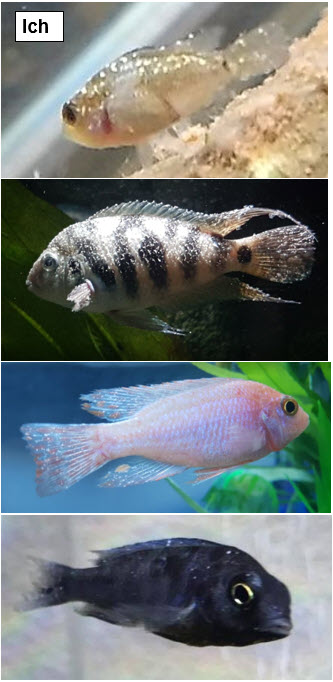
.
The life cycle of freshwater ich has three distinct life stages:
- the single trophont
- A roughly 2-millimeter diameter “white spot” in a case on the skin or gills of the fish
- Feeds on fish mucus and cells
- Lasts 2 to 5 days at 780 F
- Drops off as a single cell
- Resistant to medicines other than malachite green and methylene blue.
- the single tomont
- A single cell in a case which attaches itself to plants, decoration, sand or gravel with sticky mucus
- Lasts 1 to 2 days at 780 F
- Multiplies into about 500 to 1,000 cells inside the case
- Case ruptures, freeing the multiplied cells
- Resistant to medicines other than malachite green and methylene blue.
- the 500 to 1,000 theronts
- A tiny ciliated cell (50 to 100 microns in diameter) that is free swimming and infectious
- Lives 2 to 3 days at 780 F
- Can be attacked easily by medications
- Finds a fish and attaches itself, growing into a white spot the size of a grain of salt
- Killed by formalin/malachite green or copper
So at 780 F the life cycle of ich is 5 to 10 days, with 7 days being a good average.
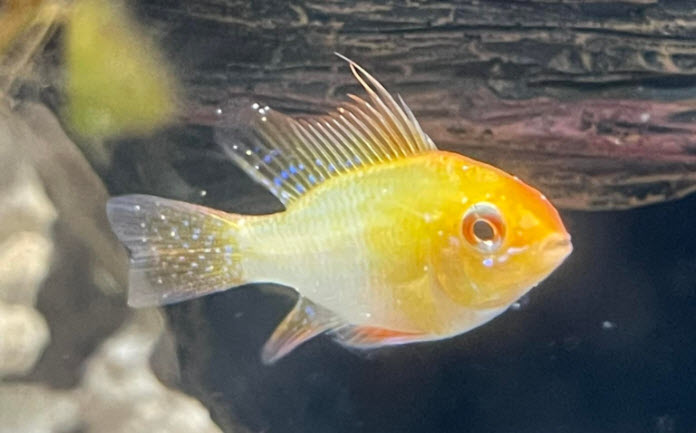
Fatality of Ich
Ich is simply rarely fatal in healthy warm water aquarium fish. The ich organism is removed by established filters in the aquarium quite easily after the initial infestation. This is why those who get high mortality with ich are invariably newcomers with a newly set up filter which doesn’t yet have the “brown gunk” that literally “eats” the ich organisms.
The members of about ten Facebook aquarium groups were asked: “Of the cases of ich that YOU have had in YOUR aquariums, how many fish died?”. There were about 70 replies. Three of the replies had fish which died. All these three instances were where new fish were added to new aquarium. All the rest of the replies had no fish deaths, including one keeper with 200 aquariums for 30 years and one who had many aquariums for fifty years. This is very revealing. Ich is just rarely fatal in the established home aquarium.
There are is an exception to the “rarely fatal” conclusion. Sometimes fish get ich on the gills which allows bacteria to invade the gills. This results in “bacterial gill disease”. If one sees a few spots of ich, bacteria can be invading the gills and cause “gill disease” concurrently with the ich.
With gill disease the fish “pants” and hangs motionless in one place. The gills become bright crimson red and inflamed. There can be spots of red at the base of the pectoral fins and a thin papery look is found on the gill plate due to mucus. This is a serious disease, much more serious than the ich that might have initiated it. It needs treatment with a broad-spectrum antibiotic.
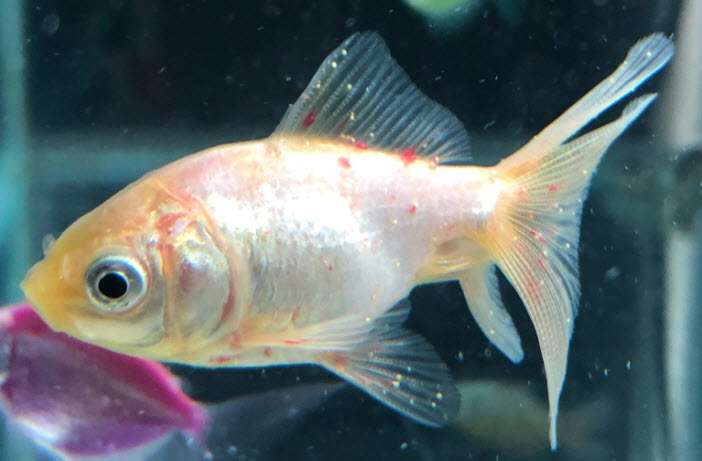
There are also possibly some other organisms which are very much like ich in appearance but are close cousins of the ich organism. These ich cousins seem to have a higher mortality and are reportedly becoming somewhat common in Europe. I say “reportedly” as I can find no really good information on it.
There are also two organisms not closely related to ich which can look just like ich. If one has the white spots typical of ich and livebearer fish are rapidly dying, almost always the culprit is another organism called Tetrahymena. Tetrahymena is almost always is indicative of water with a high bacterial count. Added filtration is the only good solution. Tetrahymena is especially prevalent among guppies and other livebearers.
Fish other than livebearers get a bacterial disease called “columnaris” which can be rapidly fatal. This bacterial disease is often accompanied by an organism called “epistylis”. Epistylis looks much like ich and is often confused with it. Easily 50% of the cases of ich seen on social media are actually columnaris with secondary epistylis.
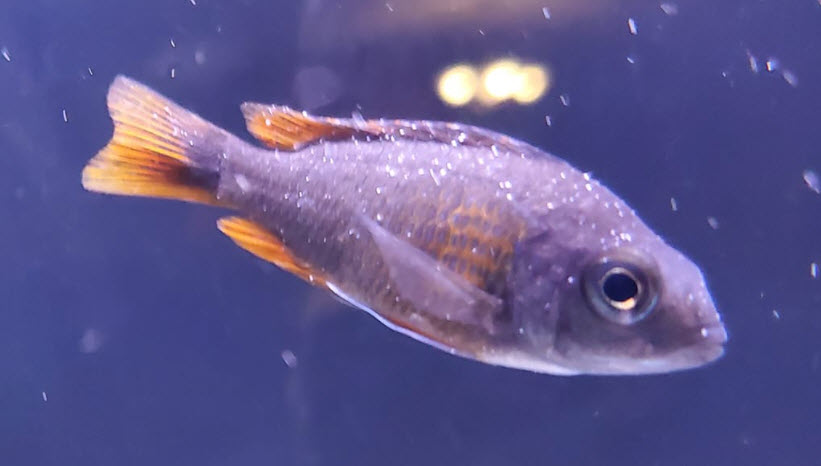
Ich Dormancy
One common controversy is whether or not ich can survive without fish. Most social media “experts” say that ich cannot survive without fish for more than two to four weeks. But there is absolutely no scientific research I could find that supports this hypothesis.
Most scientists seem of the opinion that ich can survive in a “dormant” stage on a fish for up to eight to ten weeks. But again I can find no research which supports this hypothesis.
Most scientists also feel that ich cannot survive for more that a week or two without a fish host. Personally I have never had a case of ich break out in a tank where no new fish have been added. NEVER. Which is one of the reasons quarantine for four weeks minimum is so important to me. I have had cases of ich in quarantine aquariums, especially if the fish are from big box stores.

Ich in more Depth
Ich is the most common fish disease and warrants a more in-depth discussion. The following chapters are devoted to this common fish disease:
10.2.2.2. Immunity of Fish to Ich
10.2.2.3. Ich Medications
10.2.2.4. Ich Medications in More Depth
10.2.2.5. Ineffective Ich Medications
10.2.2.6. Using Filtration to Remove Ich
10.2.2.7. Treating Ich with Heat
.
Return to Disease Menu
Return to Skin Protozoan Menu
Return to Ich Menu
.
Aquarium Science Website
The chapters shown below or on the right side in maroon lead to close to 400 articles on all aspects of keeping a freshwater aquarium. These articles have NO links to profit making sites and are thus unbiased in their recommendations, unlike all the for-profit sites you will find with Google. Bookmark and browse!
.

Leave a Reply